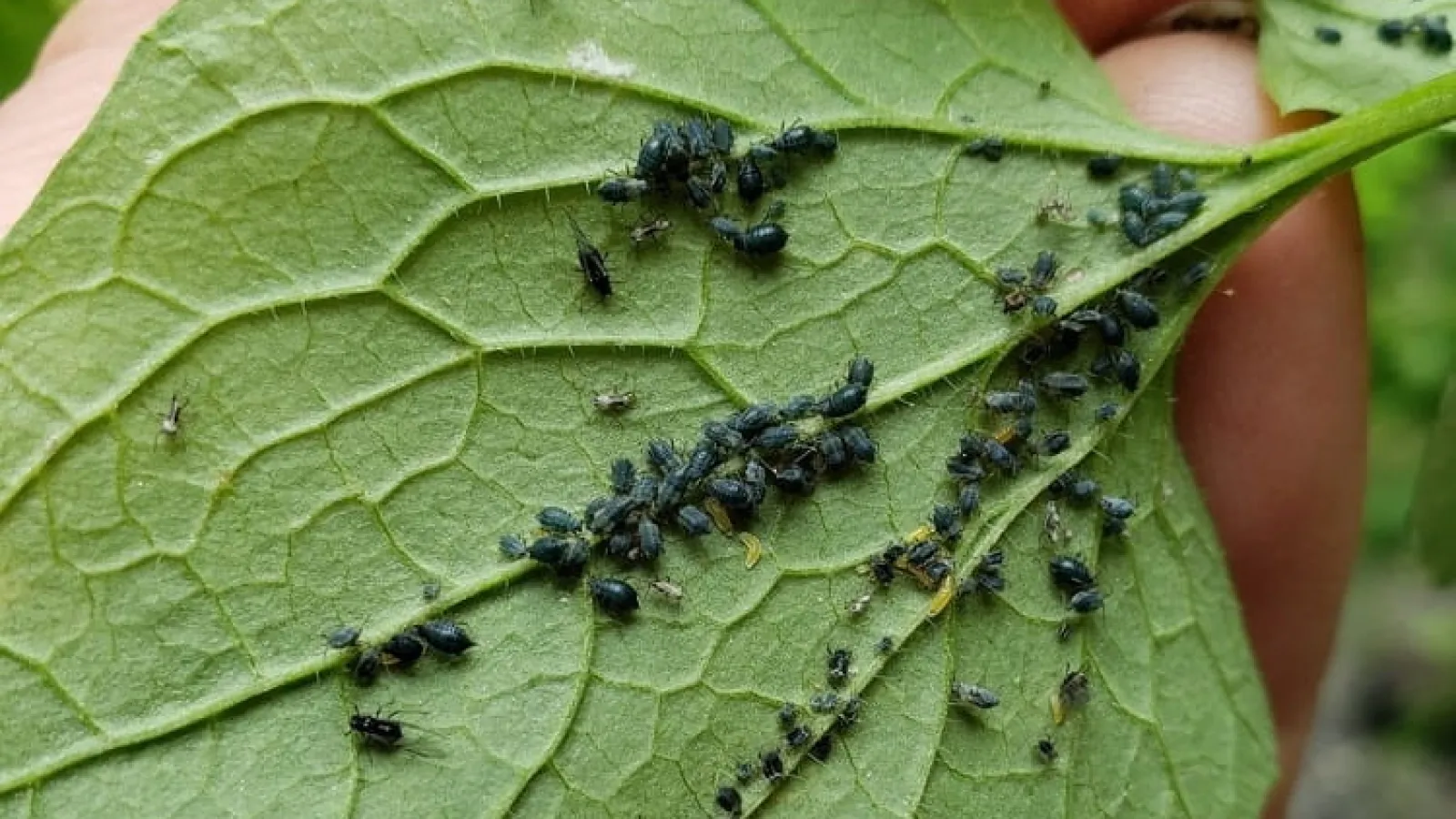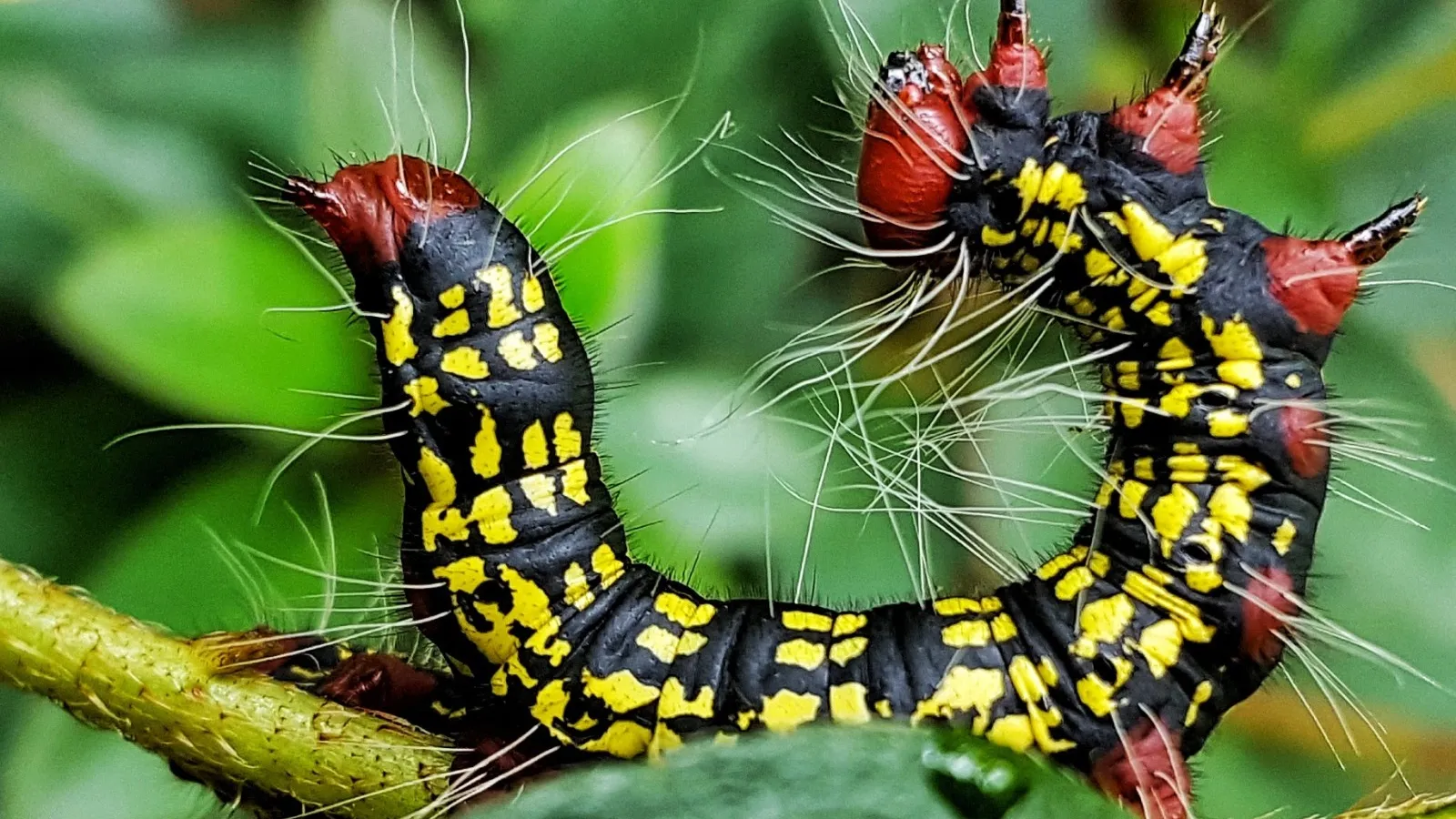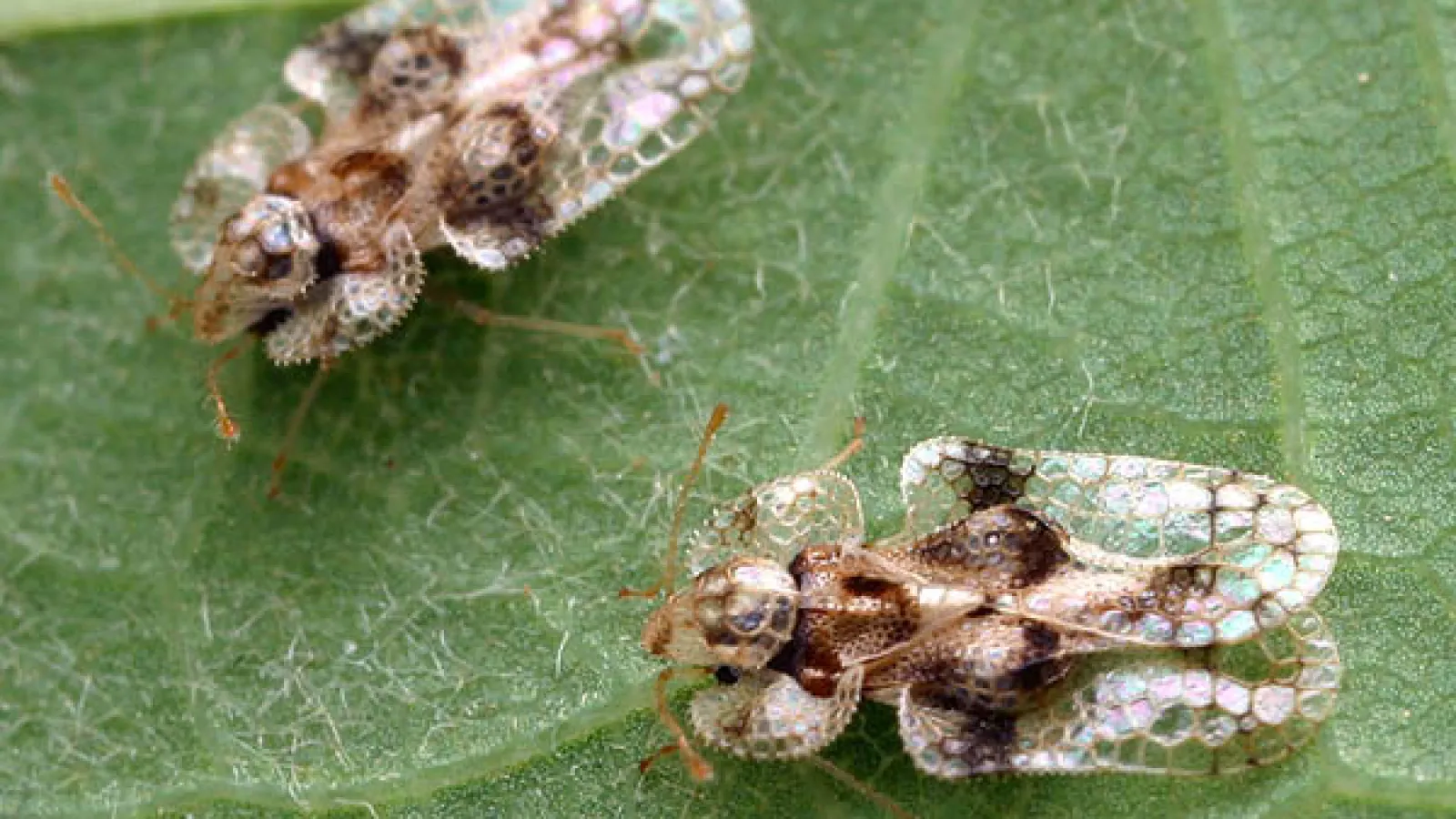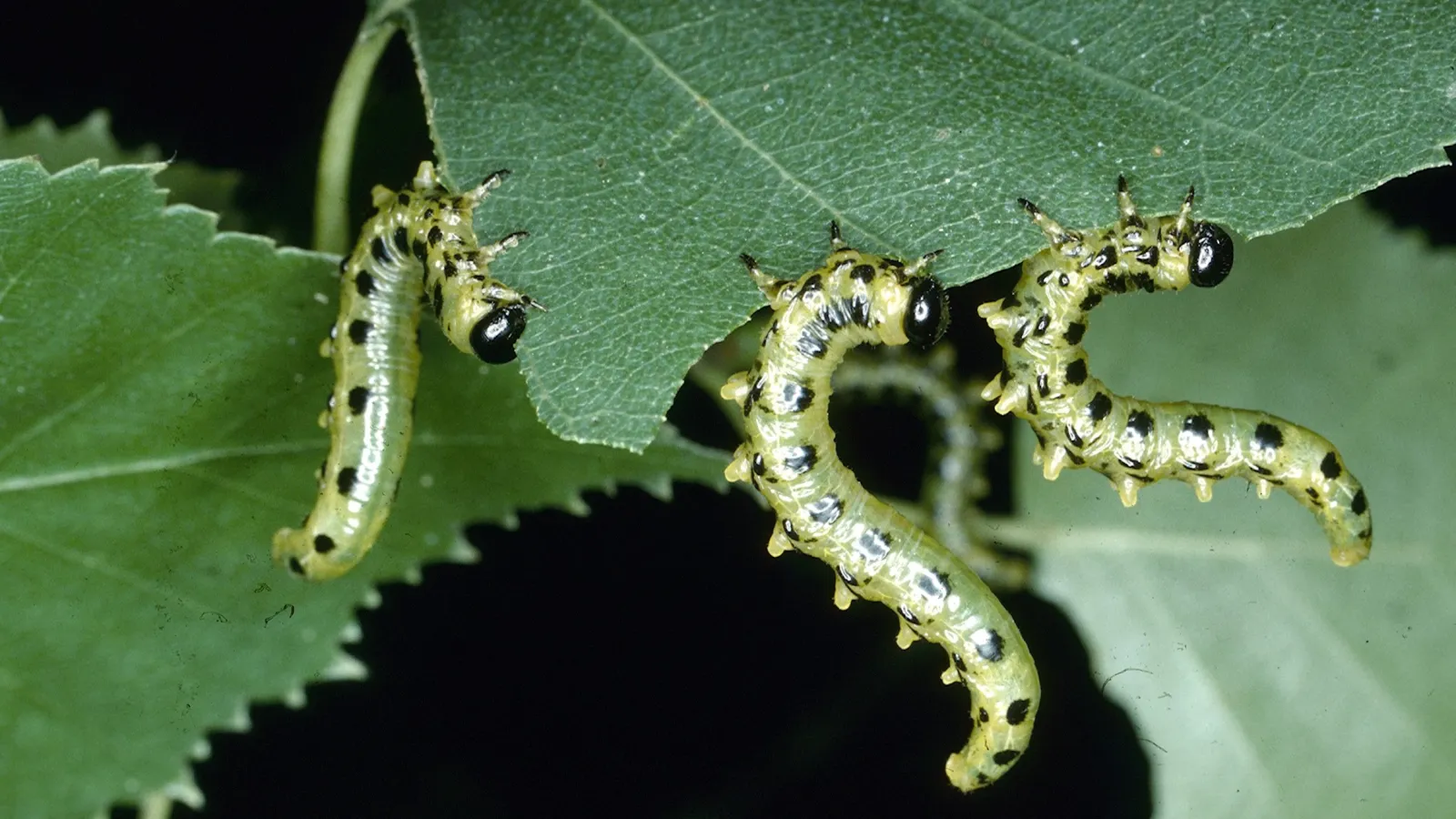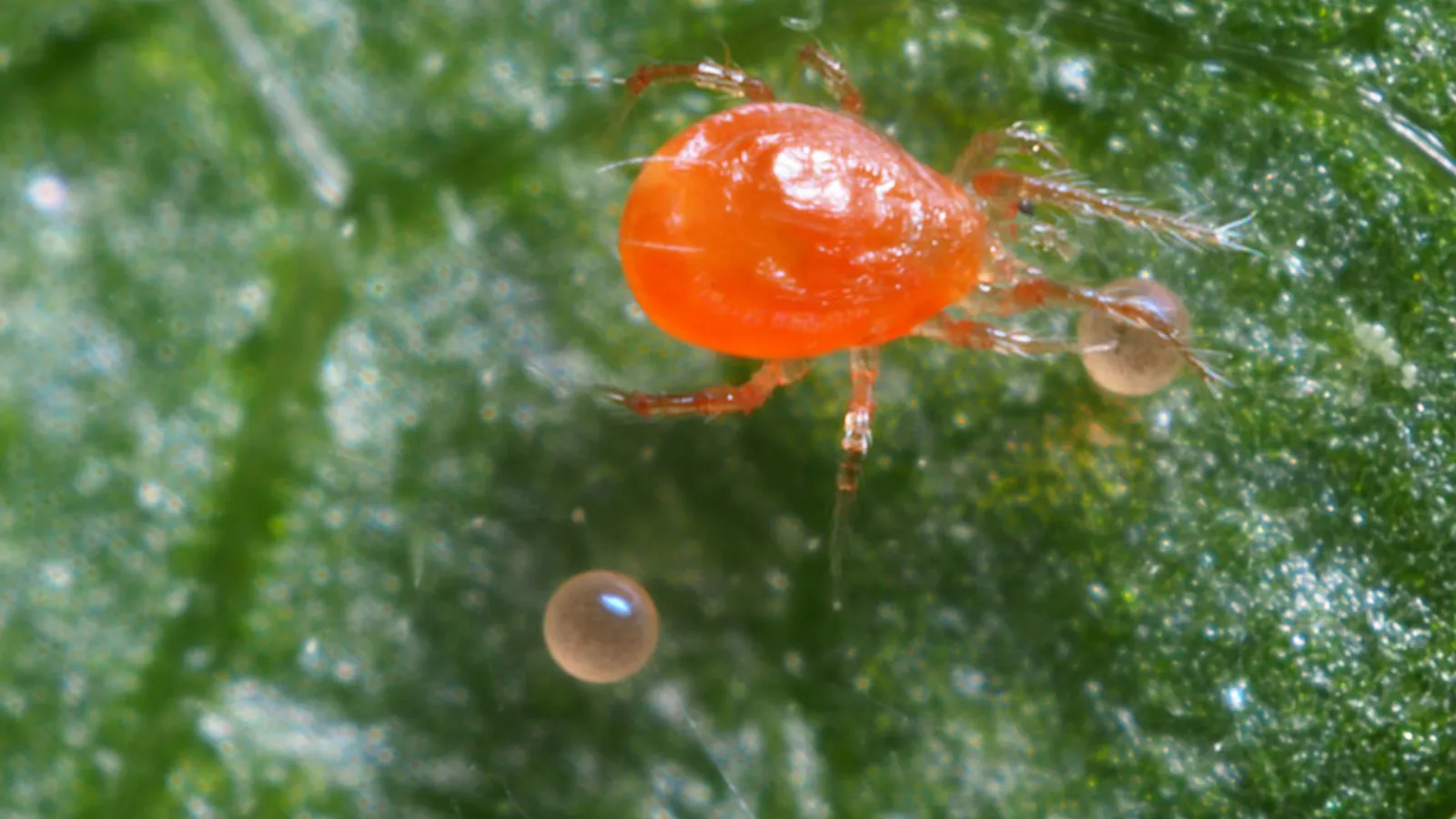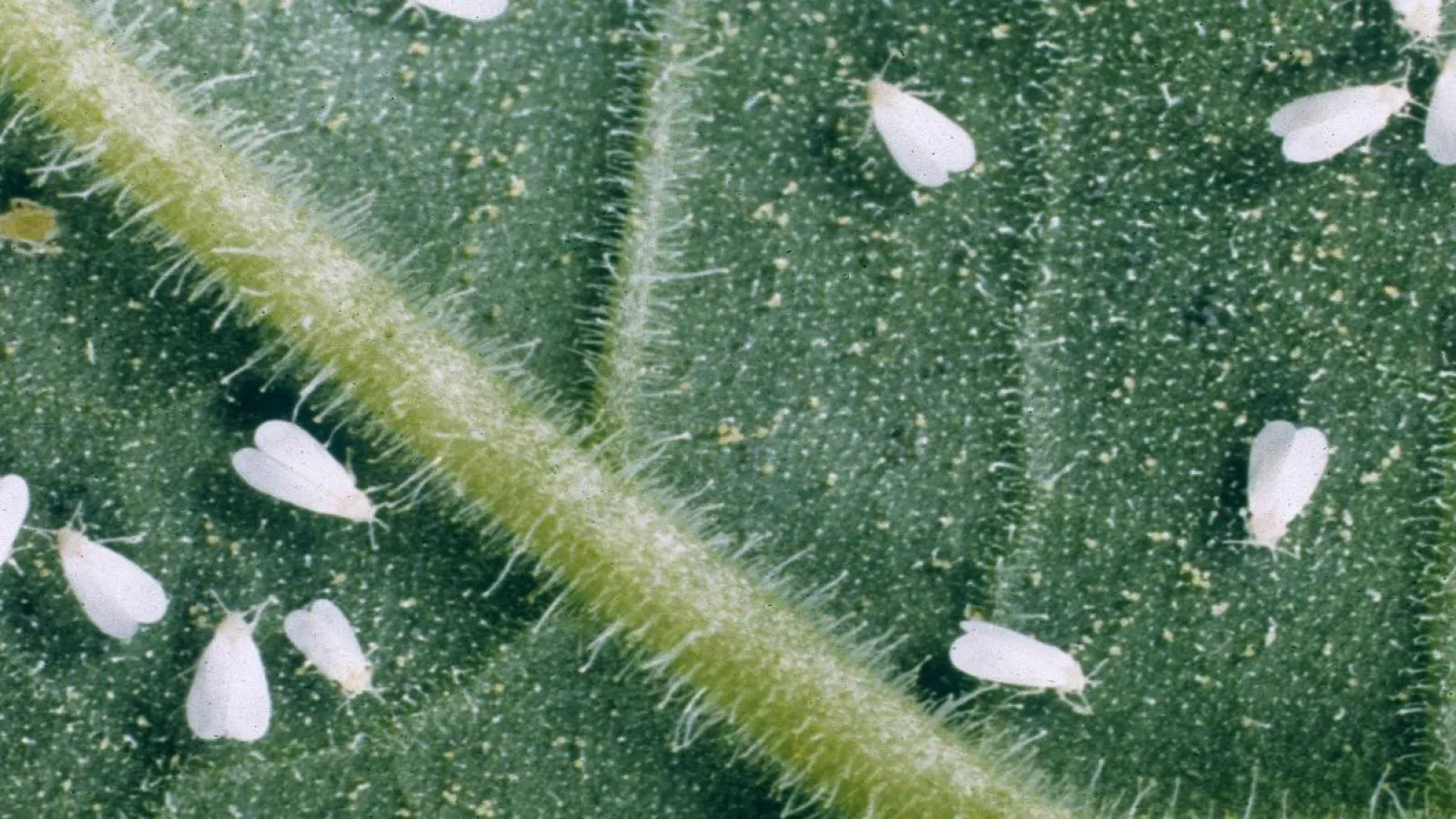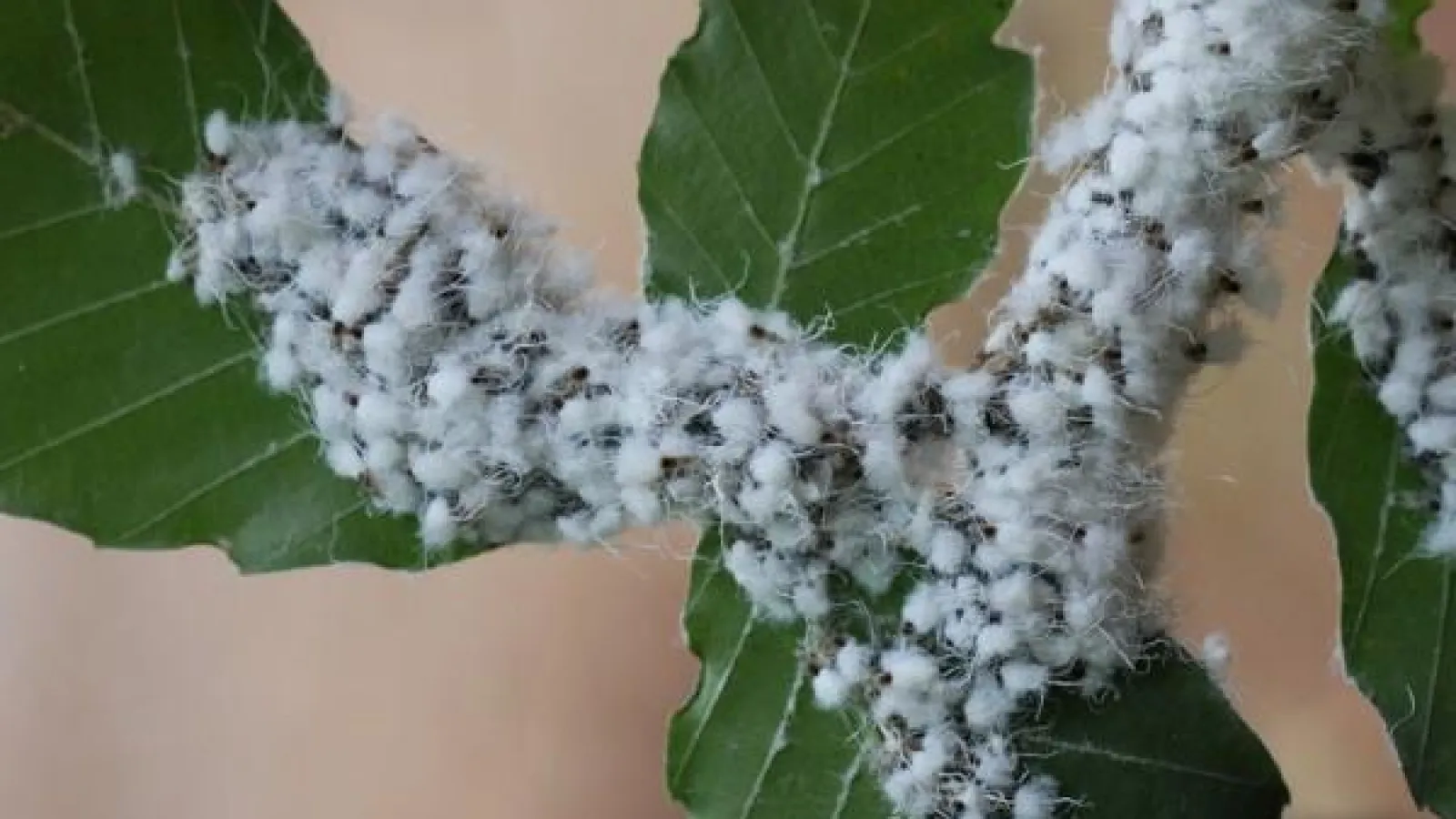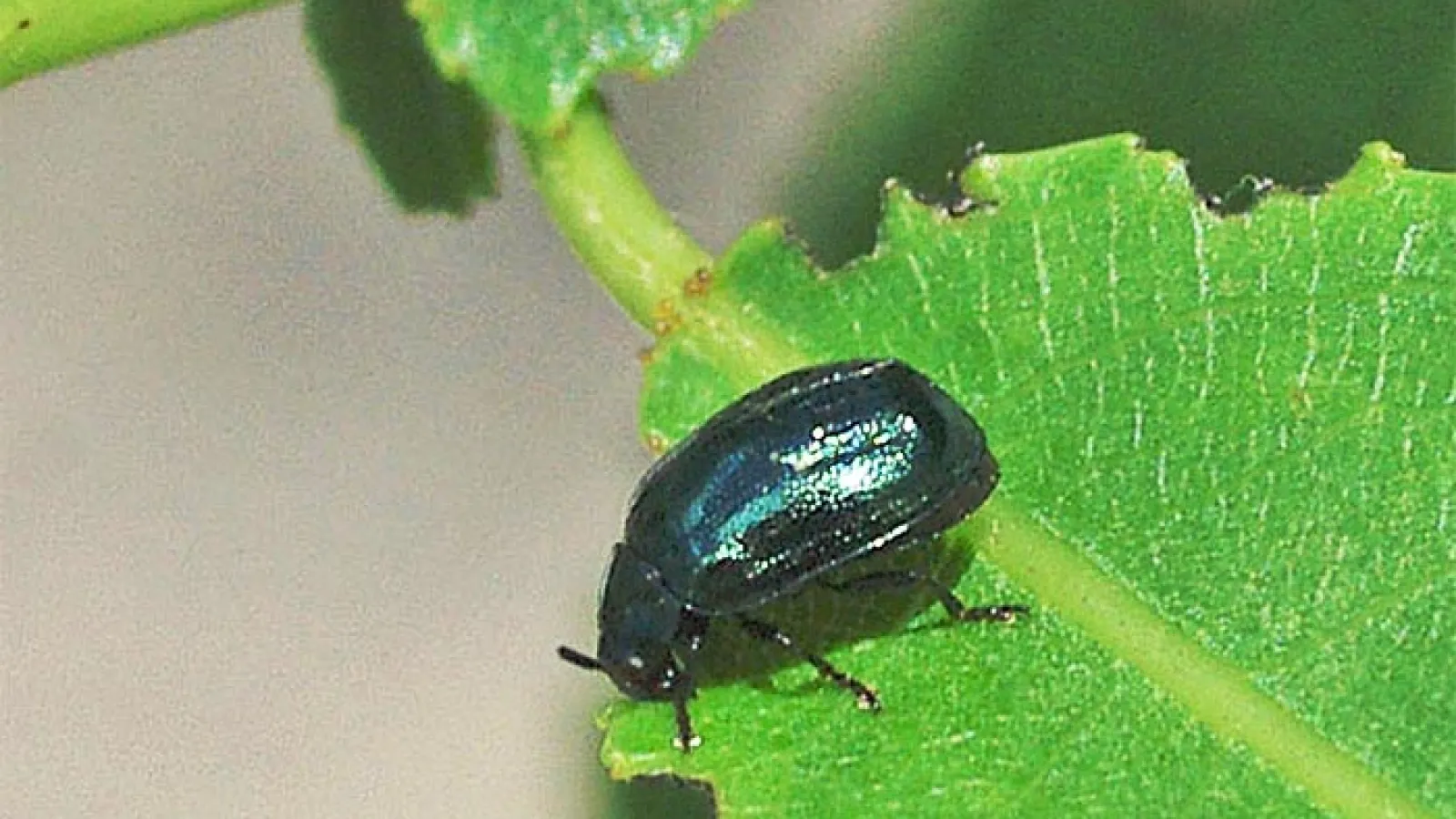Tree & Shrub Insect Library
Common Tree & Shrub Insects
Don't let your trees and shrubs be damaged or destroyed by insects. Learn more about what may be eating your plant.
Ambrosia beetles
- Found on crepe myrtles, conifer trees, maples, woody shrubs, and many others
- Active in spring and summer
Ambrosia beetles are attracted to ethanol, a chemical that woody plants produce when stressed or dying. The female beetles bore into the tree and infect it with ambrosia fungus. The infested plant often dies from the boring, the fungus, or a secondary pathogen that entered the bored holes.
Photo credit: Fast Tree Removal
- Active in spring and summer
Ambrosia beetles are attracted to ethanol, a chemical that woody plants produce when stressed or dying. The female beetles bore into the tree and infect it with ambrosia fungus. The infested plant often dies from the boring, the fungus, or a secondary pathogen that entered the bored holes.
Photo credit: Fast Tree Removal
Aphids
- Found on roses, crepe myrtles, viburnums, euonymus, hawthorns, pines, and more
- Active in the fall and spring
Aphids are soft-bodied insects that use their piercing-sucking mouthparts to feed on plant sap. They also excrete a sweet, sticky honeydew which attracts ants and can cause sooty mold to develop.
- Active in the fall and spring
Aphids are soft-bodied insects that use their piercing-sucking mouthparts to feed on plant sap. They also excrete a sweet, sticky honeydew which attracts ants and can cause sooty mold to develop.
Azalea caterpillars
- Found on azaleas and rhododendrons
- Active in late summer to early fall
Often referred to as the "Labor Day caterpillar," they can completely defoliate the plant before detected. These two-inch caterpillars are quite colorful, with stripes and reddish feet. Their head starts black and turns red as the caterpillar matures.
- Active in late summer to early fall
Often referred to as the "Labor Day caterpillar," they can completely defoliate the plant before detected. These two-inch caterpillars are quite colorful, with stripes and reddish feet. Their head starts black and turns red as the caterpillar matures.
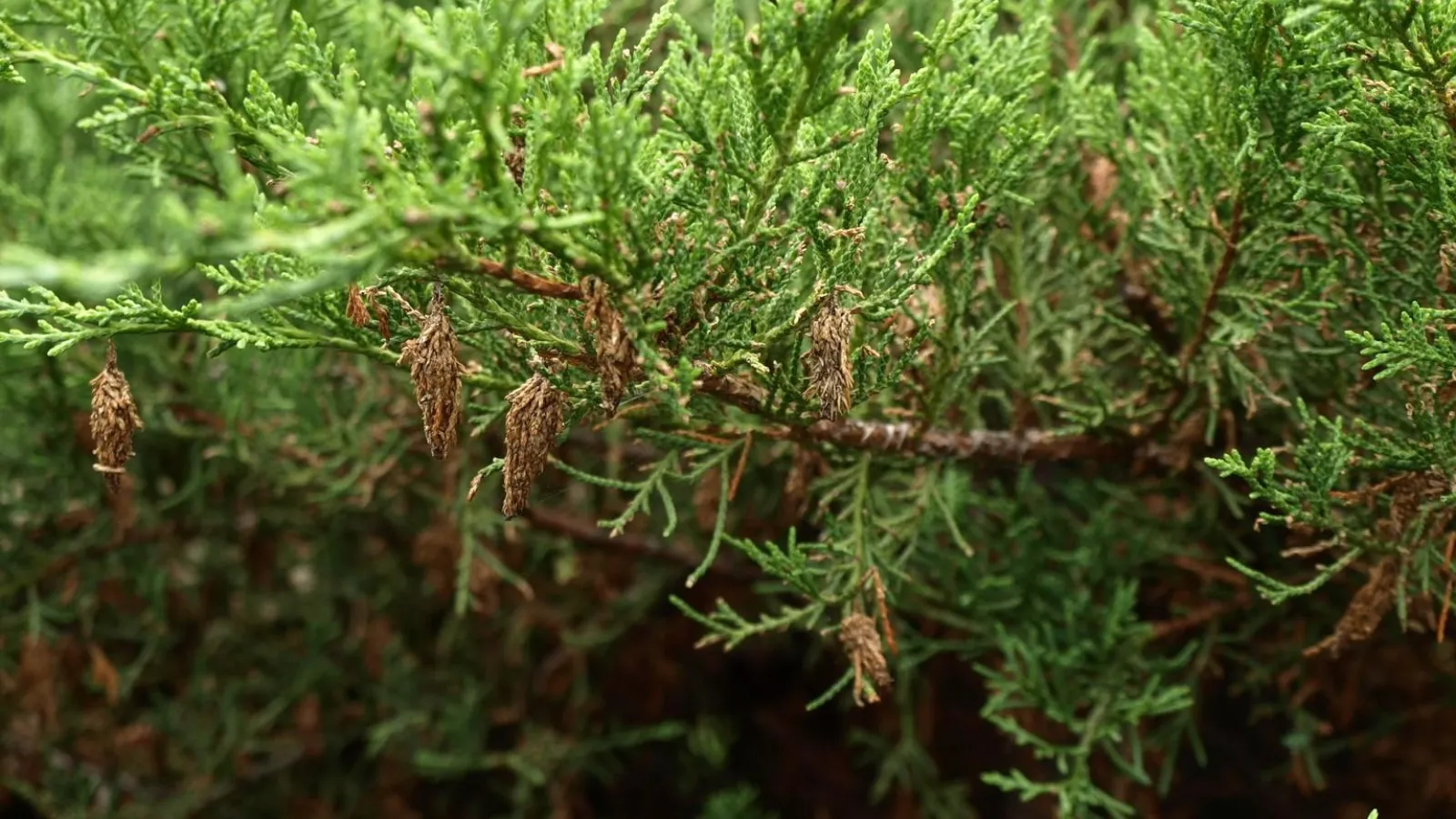
Bagworms
- Found on evergreens, arborvitae, and Leylands
- Active in the summer
To search for food, the bagworms spin a silk thread so they can be carried by the wind toward nearby plants in an act called ballooning. Once they start feeding, the larvae construct bags out of silk and plant debris. Bagworms only cause damage to host plants when feeding during the caterpillar stages.
- Active in the summer
To search for food, the bagworms spin a silk thread so they can be carried by the wind toward nearby plants in an act called ballooning. Once they start feeding, the larvae construct bags out of silk and plant debris. Bagworms only cause damage to host plants when feeding during the caterpillar stages.
Photo credit: Eric Rebek, Oklahoma State University
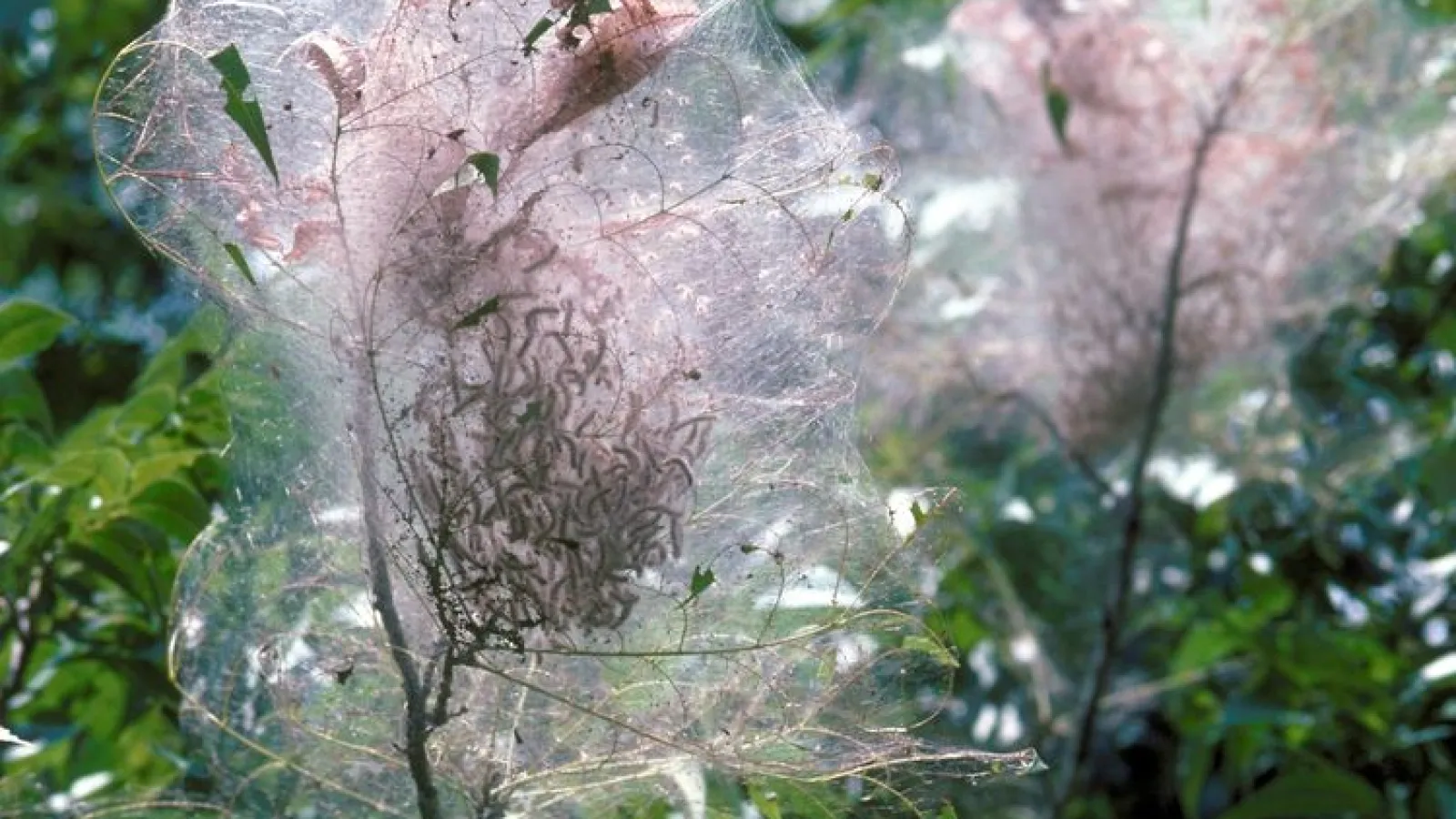
Fall webworms
- Found on native trees, oaks, elms, and sycamores
- Active in the fall
Although the insect is unsightly, their webs can be an end-of-summer showstopper. If the web is white, it's new. If it's tan or brown with no larvae, then it's older and will fall out of the trees during winter. Fortunately, fall webworms are generally harmless.
Photo Credit: G. Keith Douce, University of Georgia, Bugwood.org
- Active in the fall
Although the insect is unsightly, their webs can be an end-of-summer showstopper. If the web is white, it's new. If it's tan or brown with no larvae, then it's older and will fall out of the trees during winter. Fortunately, fall webworms are generally harmless.
Photo Credit: G. Keith Douce, University of Georgia, Bugwood.org
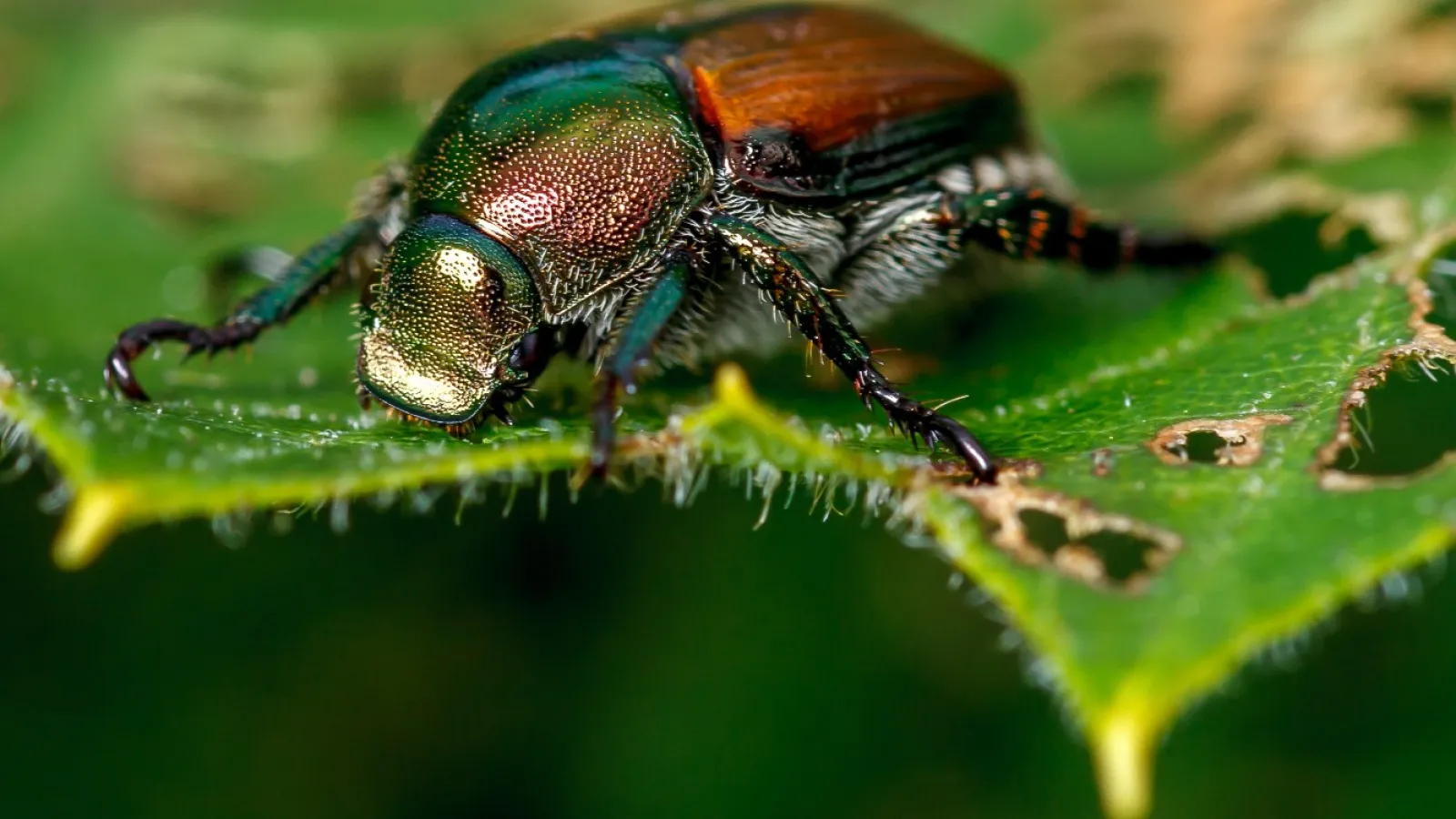
Japanese beetles
- Found on crepe myrtles, roses, grape trees and over 300 more plants
- Active in the late spring and early summer
Female Japanese beetles live for a few weeks feeding on trees, shrubs, and roses in the morning and returning to the turf in the afternoon to lay more eggs. They don't typically kill established plants but can skeletonize them. Their damage is usually only superficial, leaving no long-term damage to the plants.
- Active in the late spring and early summer
Female Japanese beetles live for a few weeks feeding on trees, shrubs, and roses in the morning and returning to the turf in the afternoon to lay more eggs. They don't typically kill established plants but can skeletonize them. Their damage is usually only superficial, leaving no long-term damage to the plants.
Lace bugs
- Found on azaleas, evergreens, rhododendrons, and sycamores
- Active in the fall and spring
Though lace bugs cause no real harm, they can be a major problem when present in high numbers. Signs of lace bugs are a sticky substance covering leaves or stems, premature leaf drop, slowed growth, poor blooms, sooty mold, and curling or yellowing of the leaves.
- Active in the fall and spring
Though lace bugs cause no real harm, they can be a major problem when present in high numbers. Signs of lace bugs are a sticky substance covering leaves or stems, premature leaf drop, slowed growth, poor blooms, sooty mold, and curling or yellowing of the leaves.
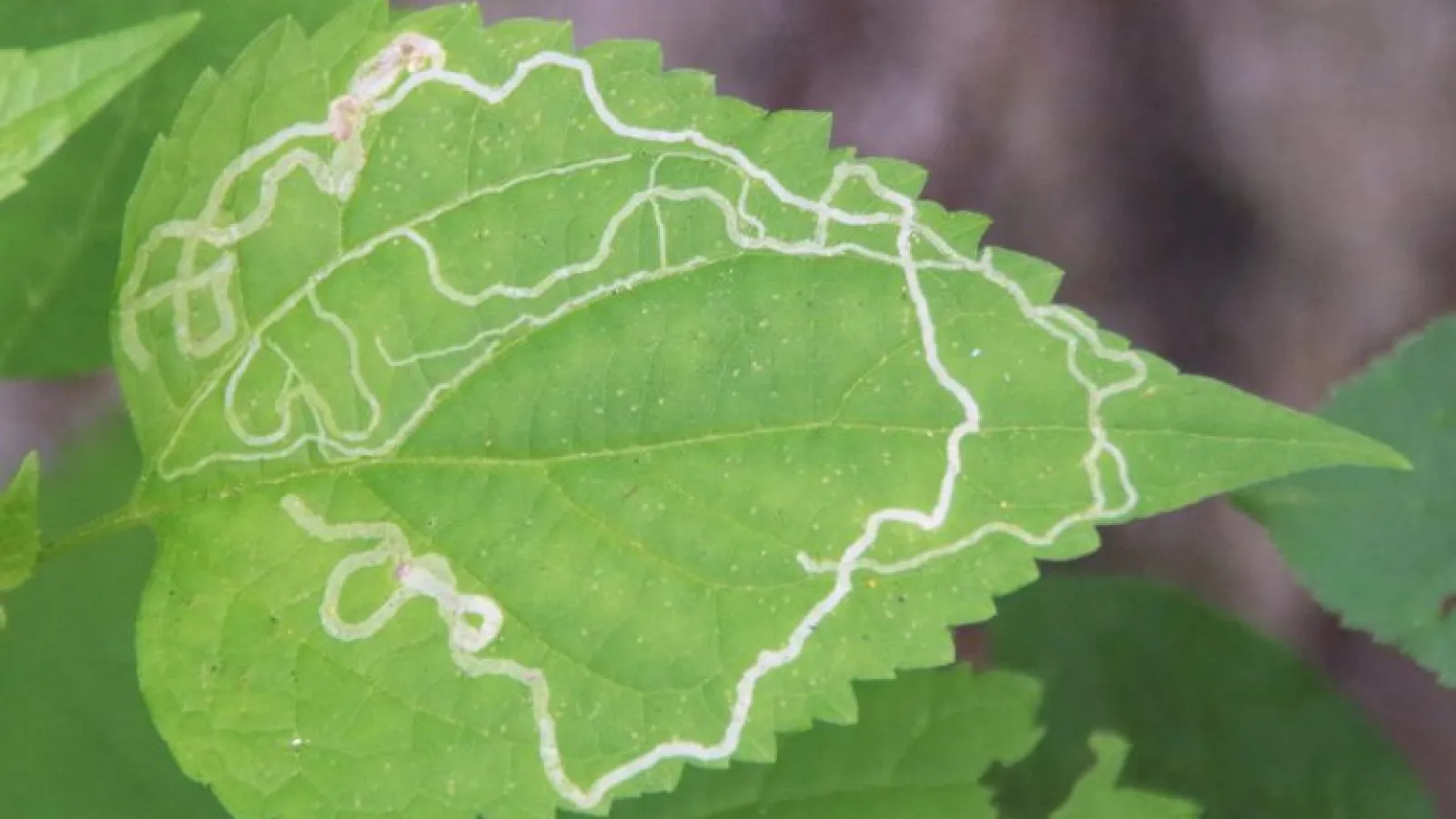
Leaf miners
- Found on boxwoods, hollies, birch, and oak trees
- Active in the summer and early fall
Leaf miner damage is unsightly and, if left untreated, can cause serious damage to the plant. Leaf miners are black flies. But the larvae of the flies cause the issues by boring through the leaf. Their damage looks like yellow, squiggly lines.
Photo credit: University of Wisconsin
- Active in the summer and early fall
Leaf miner damage is unsightly and, if left untreated, can cause serious damage to the plant. Leaf miners are black flies. But the larvae of the flies cause the issues by boring through the leaf. Their damage looks like yellow, squiggly lines.
Photo credit: University of Wisconsin
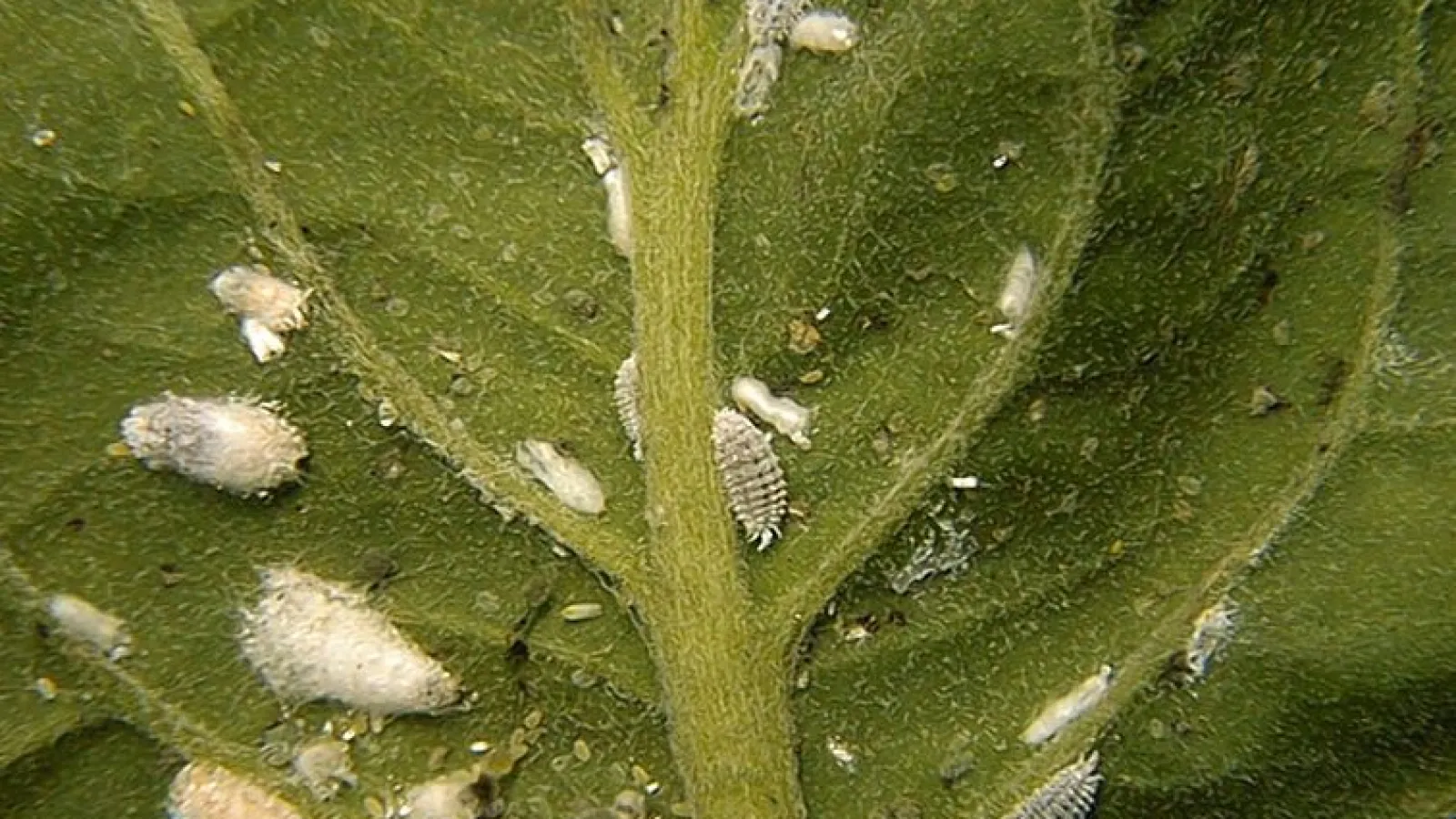
Mealybugs
- Found on abelia, roses, oak trees, and many more
- Active in the summer
Mealybugs are tiny plant pests, measuring a few millimeters to less than 1 inch, and feed by piercing-sucking mouthparts. Once this pest has been established in the landscape, biological control options are most often recommended.
Photo credit: Alabama Cooperative Extension System
- Active in the summer
Mealybugs are tiny plant pests, measuring a few millimeters to less than 1 inch, and feed by piercing-sucking mouthparts. Once this pest has been established in the landscape, biological control options are most often recommended.
Photo credit: Alabama Cooperative Extension System
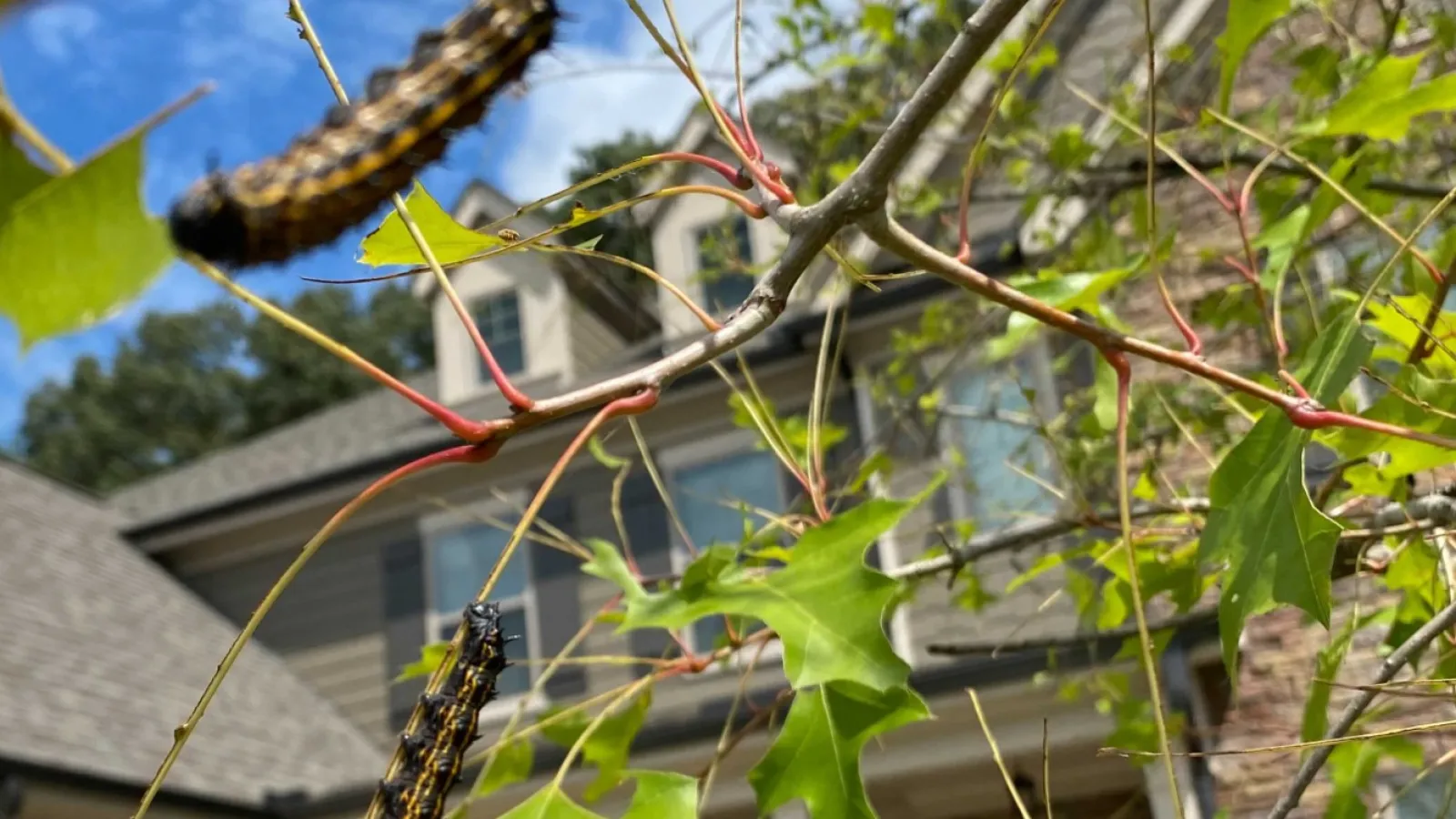
Oakworms
- Found on oak, hickory, and birch trees
- Active in the late summer and early fall
Mature oakworms are black with eight orange-to-yellow stripes and two black spines behind the head. They are about 1 - 1.5 inches long. Their damage is normally localized skeletonization turning to defoliation. Pruning out the infested area usually resolves the issue.
- Active in the late summer and early fall
Mature oakworms are black with eight orange-to-yellow stripes and two black spines behind the head. They are about 1 - 1.5 inches long. Their damage is normally localized skeletonization turning to defoliation. Pruning out the infested area usually resolves the issue.
Photo credit: Turf Masters
Sawfly larvae
- Found on river birch trees, conifers, roses, azaleas, elm, and some woody ornamentals
- Active in late spring
Adult sawflies are often mistaken for wasps.
- Active in late spring
Adult sawflies are often mistaken for wasps.
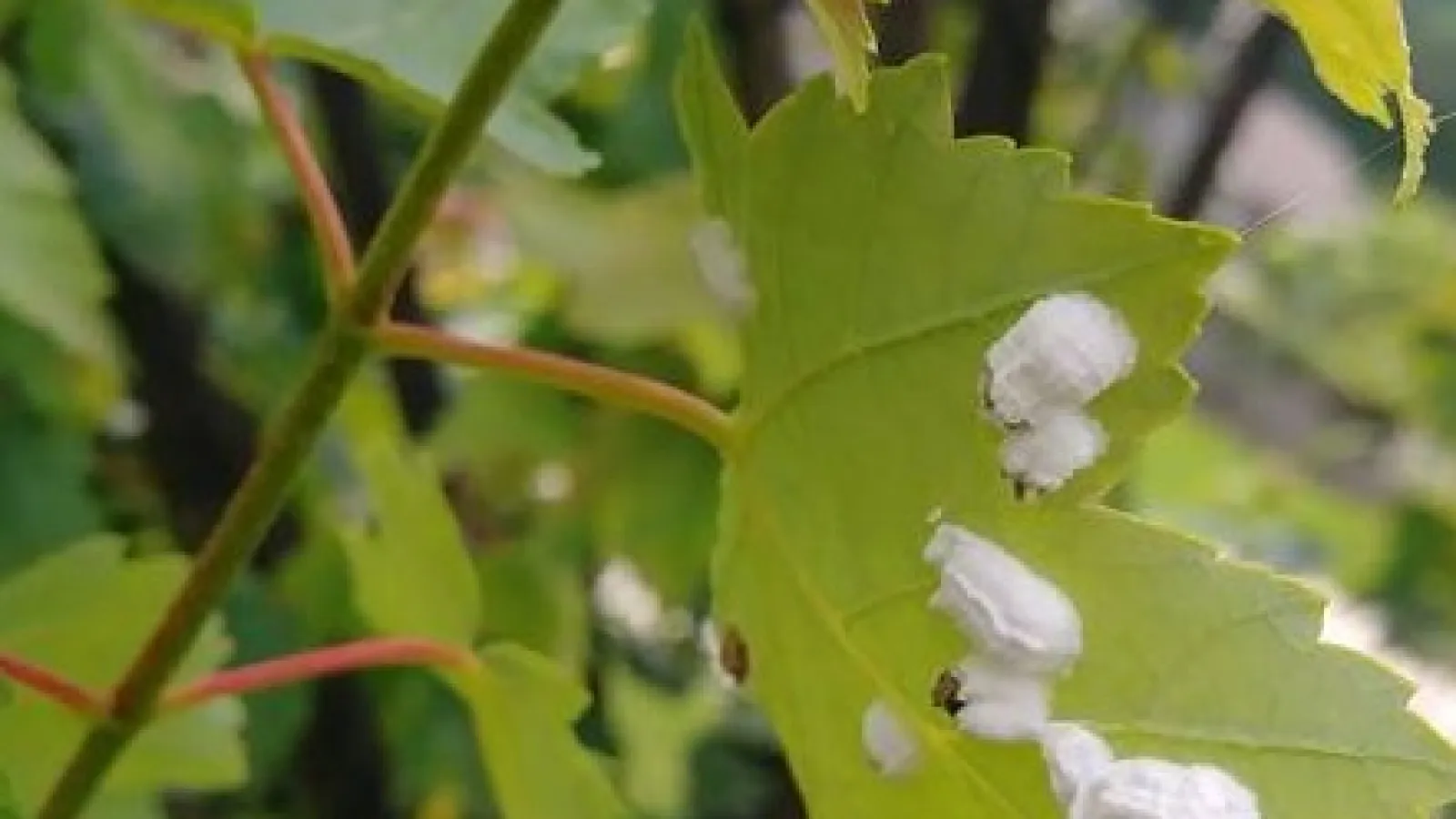
Scale insects
- Found on euonymus, golden euonymus, and hollies, magnolias
- Active in the spring and early summer
Scale insects come in a variety of forms including, armored, soft, cottony, and waxy. Damaged plants look withered and sickly, and new growth is limited. Plant leaves can turn yellow and drop from the plant and if left untreated it can eventually kill the plant.
- Active in the spring and early summer
Scale insects come in a variety of forms including, armored, soft, cottony, and waxy. Damaged plants look withered and sickly, and new growth is limited. Plant leaves can turn yellow and drop from the plant and if left untreated it can eventually kill the plant.
Phot credit: Turf Masters
Spider mites
- Found on junipers, arborvitae, hollies, boxwoods, and roses
- Active in the fall and spring
Spider mites are tiny bugs in the tick and spider family and get their name because of the web they spin and the eight legs on the adult body. Spruce spider mites are found throughout North America. However, southern red mites are found in the eastern United States and California.
- Active in the fall and spring
Spider mites are tiny bugs in the tick and spider family and get their name because of the web they spin and the eight legs on the adult body. Spruce spider mites are found throughout North America. However, southern red mites are found in the eastern United States and California.
Whiteflies
- Found on gardenias and some vegetables, including tomatoes, eggplant, peppers, and okra
- Active in summer
Whiteflies are soft-bodied, winged insects that resemble phids and mealybugs. There are over 1500 species of whiteflies but we most commonly see are citrus, silverleaf, greenhouse, bandedwinged, and giant. Whiteflies produce a sticky substance called honeydew which can cause sooty mold.
- Active in summer
Whiteflies are soft-bodied, winged insects that resemble phids and mealybugs. There are over 1500 species of whiteflies but we most commonly see are citrus, silverleaf, greenhouse, bandedwinged, and giant. Whiteflies produce a sticky substance called honeydew which can cause sooty mold.
Woolly aphids
- Found on roses, crepe myrtles, viburnums, euonymus, hawthorns, hackberry, and pines
- Active in fall and spring
Woolly aphids are small, blue or green insects that appear white and fuzzy because of a waxy protective covering resembling cotton or wool they produce. Damaged plants will have yellow leaves and leaves that curl. Similar to aphids and whiteflies, woolly aphids secret honeydew which can cause sooty mold.
- Active in fall and spring
Woolly aphids are small, blue or green insects that appear white and fuzzy because of a waxy protective covering resembling cotton or wool they produce. Damaged plants will have yellow leaves and leaves that curl. Similar to aphids and whiteflies, woolly aphids secret honeydew which can cause sooty mold.
Willow leaf beetles
- Found on weeping willows, poplar trees
- Active in spring and summer
Willow leaf beetles are tiny, metallic blue-green insects that feed on willows and poplars. Adults overwinter in bark crevices or on the ground in leaf litter. The beetles will skeletonize leaves, eating the tender, green tissues between the veins. Fortunately, willow leaf beetle damage is more cosmetic than deadly for the plant.
- Active in spring and summer
Willow leaf beetles are tiny, metallic blue-green insects that feed on willows and poplars. Adults overwinter in bark crevices or on the ground in leaf litter. The beetles will skeletonize leaves, eating the tender, green tissues between the veins. Fortunately, willow leaf beetle damage is more cosmetic than deadly for the plant.
